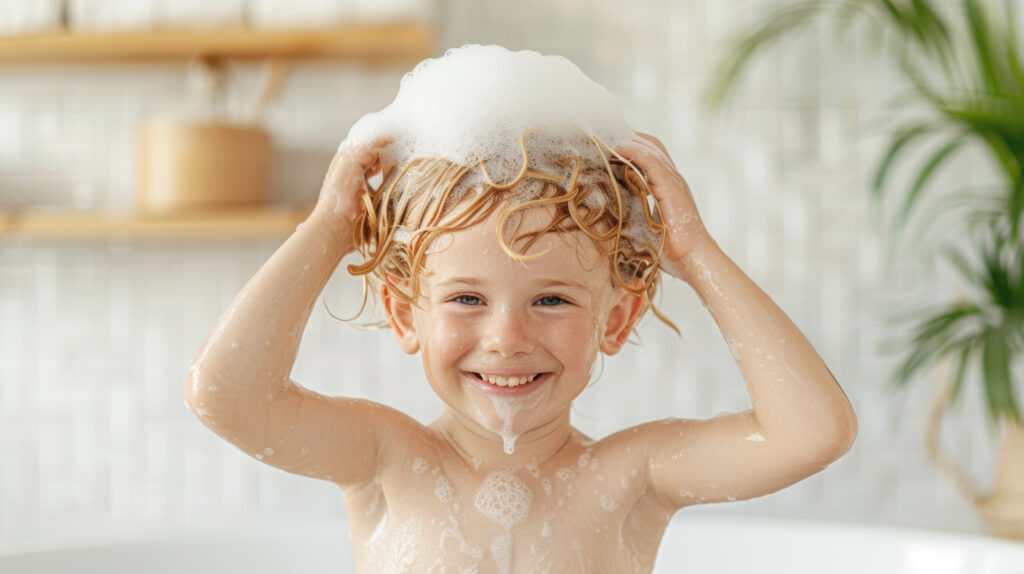
Baby hair care is all about gentle, mindful practices that protect a baby’s sensitive scalp and delicate hair. Babies have soft, fine hair and tender skin, so using mild, fragrance-free shampoos specially formulated for babies is essential.
These shampoos clean gently without stripping the natural oils that protect the scalp. It’s usually best to wash a baby’s hair only once or twice a week, as washing too frequently can dry out their scalp, causing irritation or dryness.
After washing, a gentle pat dry with a soft towel helps to avoid tangling or breakage. Babies with longer hair may benefit from a soft-bristled brush, which helps untangle without pulling or scratching the scalp.
Brushing also stimulates blood flow to the scalp,
Supporting healthy hair growth and evenly distributing natural oils along the hair. Parents often encounter cradle cap, a common condition where scaly, dry patches form on the scalp.
Massaging a tiny amount of baby oil into the scalp before shampooing can help soften
The scales, making them easier to brush. It’s essential, though, to avoid forcefully scrubbing or picking at the scales, as this can worsen irritation.
In addition to regular cleaning, paying attention to the baby’s overall comfort is important—using soft, non-restrictive head coverings,
Avoiding tight hairstyles, and shielding the scalp from direct sunlight outdoors are all steps to help maintain healthy hair. Baby hair care balances gentle cleansing, scalp protection, and avoiding irritation to support healthy hair and skin development.
How to take care of children’s hair
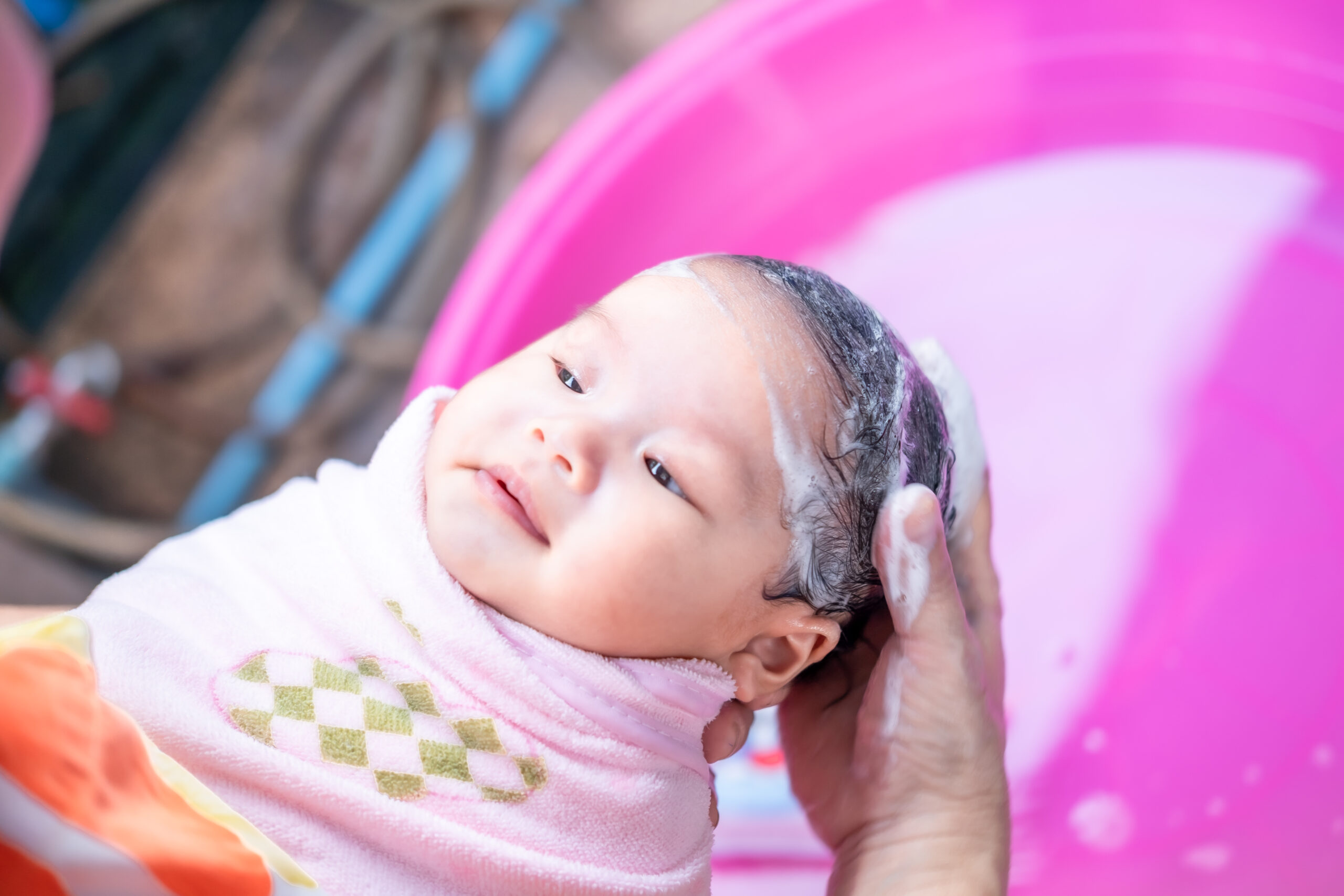
Taking care of children’s hair involves using gentle techniques and suitable products to keep their hair and scalp healthy. Kids’ hair can vary widely in texture, length, and thickness, so adapting care routines to meet their needs is key.
Use a mild shampoo free of harsh chemicals, washing the hair about two to three times a week to avoid over-drying.
For curly or textured hair, adding a child-safe conditioner helps retain moisture and manage tangles. Here’s a guide to keep your child’s hair looking and feeling its best.
Choose Mild, Child-Friendly Products
Children’s scalps are sensitive, so it’s essential to use mild shampoos and conditioners specifically formulated for kids. Look for products that are free of harsh chemicals, sulfates, and parabens.
These ingredients help prevent irritation and maintain the natural oils that protect and nourish young hair.
Washing Frequency
While it can be tempting to wash children’s hair frequently, two to three times a week is usually sufficient. Over washing can strip the hair of its natural oils, leading to dryness and irritation.
For children with textured or curly hair, once or twice a week is often enough to keep hair clean and hydrated.
Gentle Brushing and Detangling
After washing, gently detangle the hair using a soft brush or a wide-toothed comb. Start at the ends and work your way up to prevent breakage and minimize discomfort.
For curly or coiled hair, using a detangling spray or leave-in conditioner can make the process easier. Brushing regularly helps prevent tangles and keeps hair smooth.
Conditioning for Added Moisture
Children with curly, wavy, or thick hair may benefit from a light conditioner. Apply it to the ends of the hair and leave it in for a few minutes before rinsing. This will help retain moisture, reduce frizz, and make detangling much easier.
Protective Hairstyles
For children with long hair or textured hair, protective hairstyles like braids, buns, or twists can help reduce tangles and prevent breakage.
These styles keep hair secure and minimize the need for daily combing. However, make sure the style isn’t too tight, as this can stress the hair roots and lead to discomfort or even hair loss over time.
Why Do Babies Lose Their Hair?

Many new parents notice that their baby loses some or even all of their hair in the early months of life. This phenomenon, known as telogen effluvium, is very common and usually nothing to worry about.
Here’s a closer look at why this happens, the factors involved, and what to expect as your baby’s hair naturally changes.
Hormonal Changes After Birth
One of the main reasons babies lose their hair is due to hormonal changes that happen after birth. While in the womb, babies are exposed to higher levels of hormones from their mothers, which helps stimulate hair growth.
These hormones contribute to the full head of hair some babies are born with. However, after birth, hormone levels drop significantly, which can trigger a shift in the baby’s hair growth cycle.
As these hormone levels decrease, the hair enters a resting phase and eventually falls out to make way for new growth.
Stress and the Birth Experience
The transition from the womb to the outside world is a significant change for a newborn’s body, and the birthing process can be somewhat stressful.
This “stress” can trigger the hair follicles to enter the telogen (resting) phase. Although the stress isn’t the same as what adults experience, these changes in the baby’s environment and body function can still influence hair growth cycles.
Nutritional Factors
Although most newborns don’t experience hair loss due to nutrition, a balanced intake of nutrients through breast milk or formula supports general health and hair growth.
For older infants transitioning to solids, ensuring they receive adequate nutrition can also support healthy hair. However, in rare cases, deficiencies in iron, zinc,
or other nutrients could contribute to hair thinning, though this is more common in toddlers than in newborns.
When Will Baby’s Hair Grow Back?
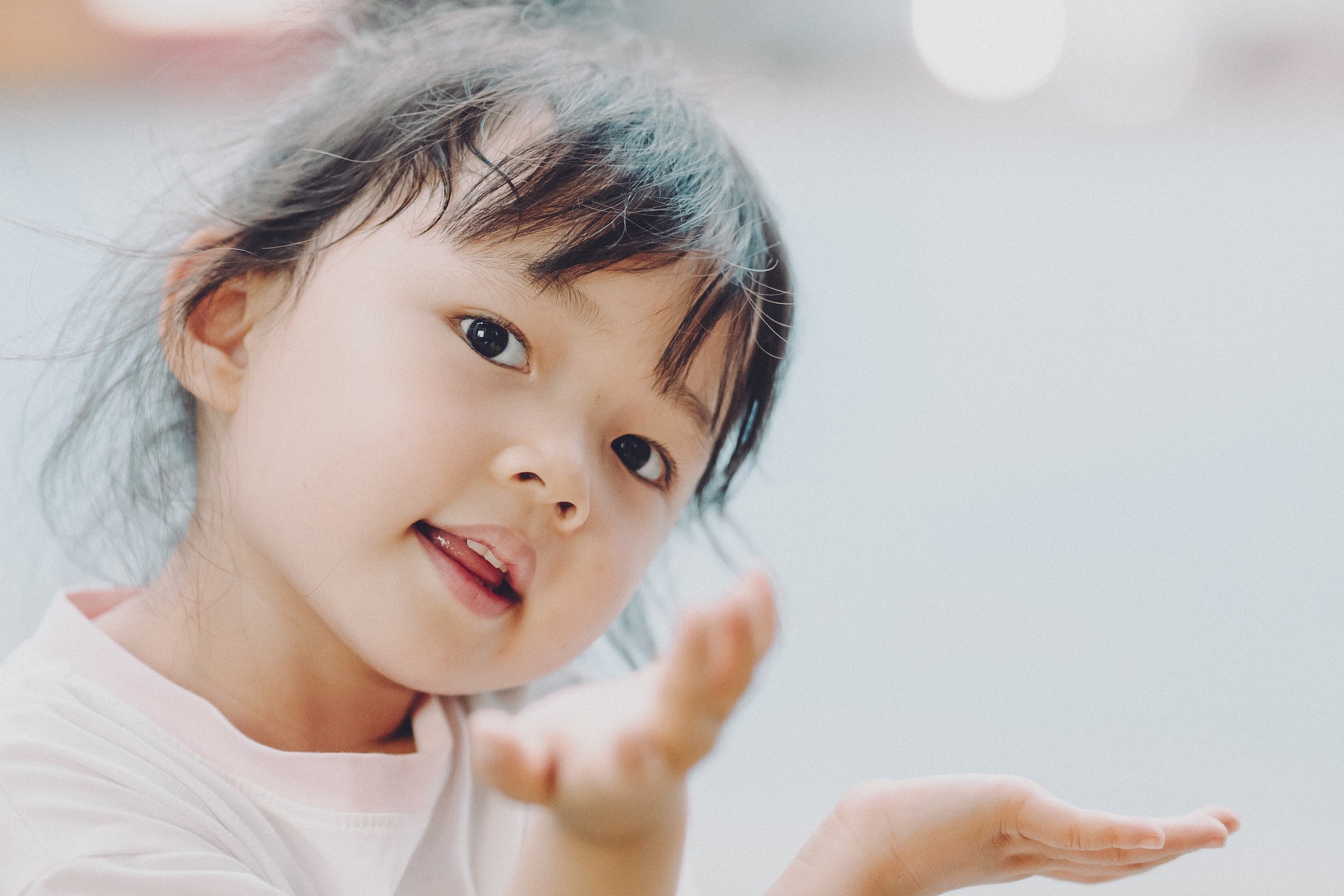
For most babies, hair loss is temporary. By the time they’re six to twelve months old, their hair typically begins to grow back and fill in.
It’s also common for the new hair to look different in colour or texture from the hair they were born with. Some babies will regrow their hair right away, while for others, it might take several months to see significant new growth.
Caring for Your Baby’s Hair and Scalp
Even though baby hair loss is a natural phase, keeping your baby’s scalp healthy can support regrowth and prevent discomfort:
Use Gentle Shampoos: Washing your baby’s scalp with a mild, tear-free shampoo a couple of times a week is enough to keep it clean without over-drying.
Brush Gently: Use a soft-bristled baby brush to gently massage and stimulate the scalp.
Avoid Tight Headwear: Keep headwear loose and soft to avoid pulling on the scalp and hair.
Limit Friction: Use soft fabrics in cribs, car seats, and carriers to reduce friction.
When to Consult a Doctor
Baby hair care loss is usually harmless, but if hair loss is accompanied by other symptoms, such as redness, scaling, or inflammation, it may be worth discussing with a pediatrician.
Rarely, conditions such as fungal infections, autoimmune conditions, or other health concerns can affect a baby’s hair, so it’s always a good idea to bring up any concerns you may have.
Why Is Your Baby’s Hair Changing Color?

Many parents notice that the hair color their baby is born with doesn’t stay the same. A baby born with a head full of dark hair might end up with light brown, blonde, or even red hair within a few months or years.
Hair color changes in babies are common and happen for several reasons, primarily due to genetics, natural pigment changes, and environmental factors.
Genetic Influence
Hair color is largely determined by genetics. Both parents’ genes, as well as those of previous generations, contribute to a baby’s unique hair color. The mix of genetic factors affects the levels and types of melanin—the pigment that gives hair, skin,
And eyes their color—produced in the hair. Different genes control melanin production and are responsible for variations in shade, which can become more noticeable as the baby grows.
For example, if both parents have dark hair but one had blonde hair as a child, the baby might begin life with light hair and gradually darken over the years.
Melanin Production and Maturation
The primary reason for hair color change in babies is related to melanin, the pigment that colors our hair, skin, and eyes. Babies are born with varying levels of melanin in their hair follicles, and the amount can increase or decrease in the first few years.
Eumelanin produces black or brown pigments, resulting in darker hair.
Pheomelanin creates yellow or red pigments, leading to blonde or red shades.
At birth, babies often have lower melanin levels, leading to lighter hair. As they grow, the production of melanin can increase, darkening the hair color.
Alternatively, for some babies, the reverse may happen if melanin production decreases over time, lightening the hair color.
Age-Related Hair Changes
As babies grow into toddlers, hair colour may continue to change. It’s common for a child’s hair colour to undergo subtle shifts during the early years. Some children who start with light hair as infants may end up with darker shades as they reach school age.
This change can continue subtly through childhood and adolescence, as genetics and melanin production stabilise, eventually reaching a more permanent colour by late adolescence.
Hair Texture Change?

Many parents are surprised to see their baby’s soft, straight, or fine hair change texture over time. A baby who starts with silky straight hair may grow curls, waves, or even thicker and coarser hair as they age.
These texture changes are normal and can happen for several reasons, mainly due to genetics, hair growth cycles, and hormonal adjustments. Here’s a look at why baby hair care texture changes and what to expect.
Genetic Influence on Hair Texture
Genetics plays a key role in determining a baby’s hair texture, but it’s not always obvious at birth. The genes that affect hair texture are complex and can express themselves over time.
For instance, parents with wavy or curly hair may have a baby with straight hair at birth, but as the baby grows, inherited curly hair traits may gradually become more pronounced.
This is because the hair follicles, which influence texture, may not reach their full maturity and final structure until later in a child’s development.
Development of Hair Follicles
The shape and size of hair follicles contribute to hair texture. Babies are born with immature hair follicles, which may produce finer, softer hair. As they grow, the hair follicles mature, and this change can alter the hair’s texture. For example:
Straight Hair: Round hair follicles produce straight hair.
Wavy or Curly Hair: Oval-shaped follicles lead to wavy or curly hair.
Coarse or Thick Hair: Larger follicles produce thicker, coarser strands.
As follicles mature over time, their shape can slightly change, resulting in texture shifts. It’s common for baby hair care to change from fine and wispy to thicker and possibly curlier as the child grows.
How to Detangle

Detangling a child’s hair can sometimes be a challenging task, especially if their hair is fine, curly, or prone to knots.
By following gentle techniques and using the right tools and products, you can make the process easier, more comfortable, and even more enjoyable for your child. Here are steps and tips to help you detangle your child’s hair safely and effectively.
Choose the Right Tools
The tools you use can make a big difference in preventing pain and minimizing hair breakage:
Wide-Toothed Comb: A wide-toothed comb is great for detangling without pulling or damaging the hair.
Detangling Brush: Detangling brushes are specially designed with flexible bristles that glide through the hair more easily, reducing tension.
Spray Bottle: Fill a spray bottle with water to dampen the hair, as damp hair is generally easier to detangle.
Child-Safe Detangling Spray or Conditioner: For more manageable hair, especially curly or textured hair, use a gentle detangling spray or leave-in conditioner to soften and lubricate the hair, making it easier to comb through.
Start with Damp or Wet Hair
Detangling works best on damp or slightly wet hair, as dry hair is more prone to breakage. Spray hair lightly with water, or detangle it after a bath when hair is partially dried. Avoid detangling when hair is soaking wet, as hair is more fragile when fully saturated.
Apply a Detangler or Leave-In Conditioner
For extra smoothness, especially if your child’s hair is curly, thick, or long, apply a child-safe detangling spray or leave-in conditioner. This adds slip to the hair, making knots easier to loosen. Distribute the product evenly through the hair using your fingers.
Separate the Hair into Sections
Working in sections helps keep the process organized and manageable. Divide the hair into small sections using hair clips or ties, focusing on one section at a time.
This approach prevents re-tangling as you work and makes it easier to handle dense or curly hair.
Final Thoughts
Detangling your child’s hair doesn’t have to be a struggle. With the right tools, gentle techniques, and a little patience, you can make
the process more comfortable and even enjoyable. Regular care and attention help keep your child’s hair healthy, tangle-free, and beautiful.
What Is Cradle Cap?
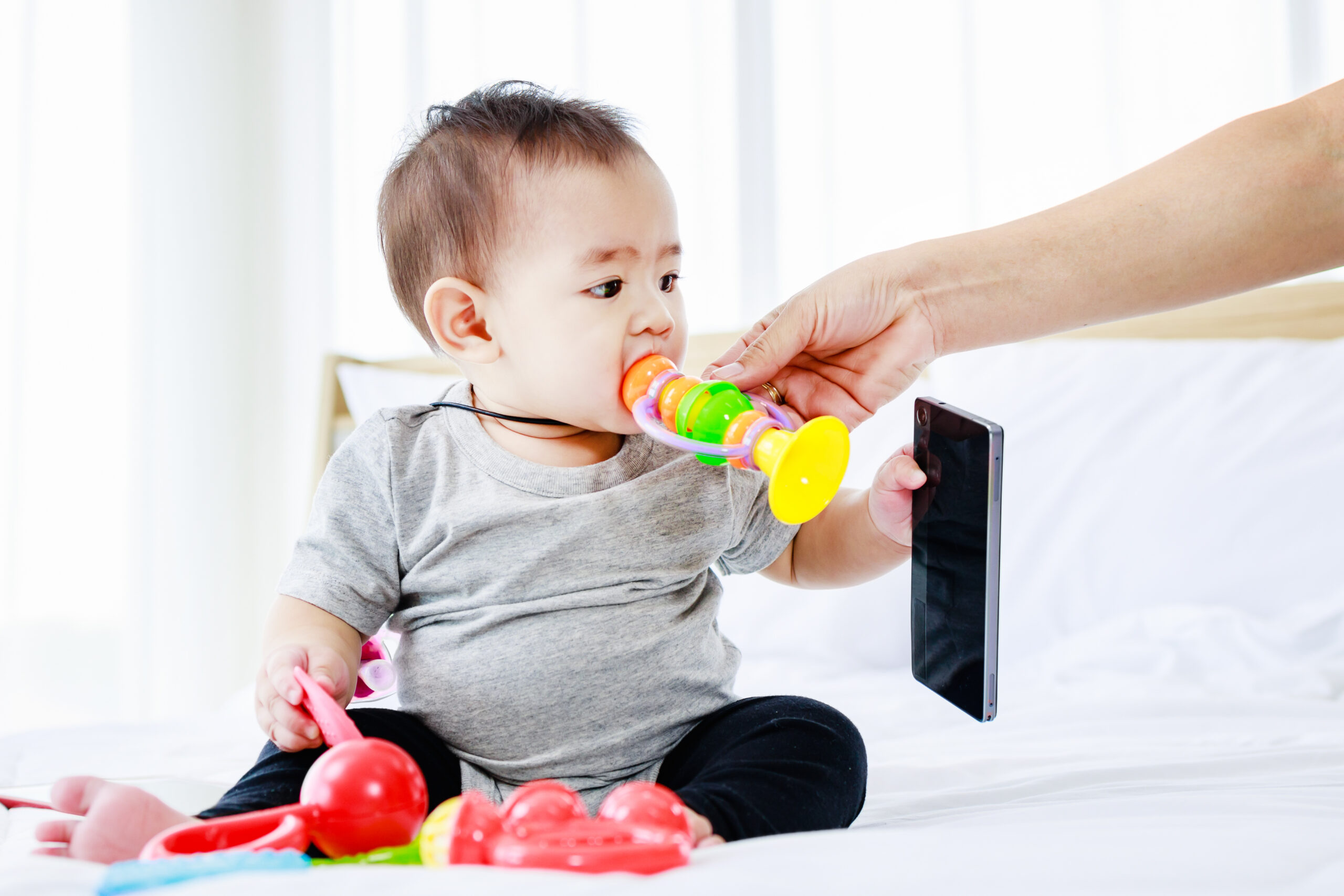
Cradle cap, also known as infantile seborrheic dermatitis, is a common, non-itchy, and harmless skin condition that affects many newborns and infants. It typically appears as scaly, greasy patches on the scalp but can also develop in other areas,
Such as the eyebrows, behind the ears, or around the neck. Although cradle cap looks concerning, it is a temporary condition that is not painful or a sign of an infection.
Here’s an in-depth look at what cradle cap is, what causes it, how to manage it, and when to seek medical advice.
Causes
It’s believed to be caused by:
Overactive sebaceous glands produce excess oil.
Malassezia yeast that thrives in oily areas.
Hormonal changes after birth.
Treatment
The cradle cap usually clears up on its own. To manage it:
Wash the scalp with mild baby shampoo.
Gently brush with a soft brush to remove flakes.
Apply baby oil or coconut oil to soften the scales.
When Does Cradle Cap Appear, and How Long Does It Last?
Cradle cap usually appears within the first few weeks of life and is most common in infants aged 2 to 6 months. For most babies, the condition clears up on its own by the time
They reach their first birthday, although it may persist for several months in some cases. It’s also worth noting that cradle caps don’t leave permanent scars or damage to the scalp.
Final Thoughts
Cradle cap is a common, temporary condition that affects many infants. While it can look concerning, it doesn’t cause discomfort or harm, and it usually resolves on its own as your baby grows.
With gentle care, most cases of cradle caps improve quickly, and your baby’s scalp will soon return to normal. If you’re ever unsure or concerned, don’t hesitate to reach out to your pediatrician for advice on how best to care for your baby’s skin.
FAQs
When should I start washing my baby’s hair?
Answer: You can start washing your baby’s hair as soon as they are born. Initially, a gentle wipe with a soft cloth is enough. Once your baby’s hair starts to grow, you can begin washing it with a mild baby shampoo, typically 2-3 times a week to keep the scalp clean without drying it out.
How can I prevent cradle caps?
Answer: While cradle caps are common and not fully preventable, you can reduce the risk by gently washing your baby’s scalp with mild baby shampoo and using a soft brush to remove any flakes. Avoid scrubbing too hard, as this can irritate the scalp.
What kind of comb or brush should I use for my baby’s hair?
Answer: Use a soft-bristled baby brush or a wide-toothed comb. These are gentle on your baby’s sensitive scalp and help prevent hair breakage and scalp irritation.
When will my baby’s hair texture change?
Answer: It’s common for a baby’s hair texture to change as they grow. Many babies are born with soft, fine hair that may change to thicker, curlier, or coarser hair as they grow older. This change can happen gradually over the first few years.
Should I cut my baby’s hair?
Answer: There’s no need to cut your baby’s hair unless it becomes difficult to manage or you want to even out uneven patches. Most parents wait until their baby is a bit older (6 months or more) to trim hair, but it’s not necessary for healthy hair growth.
Is it safe to use baby oil on my baby’s hair?
Answer: Yes, baby oil is generally safe for your baby’s scalp in moderation. It can help moisturize dry skin and soften cradle cap flakes. However, avoid using too much oil, as it can make the scalp greasy and harder to clean.
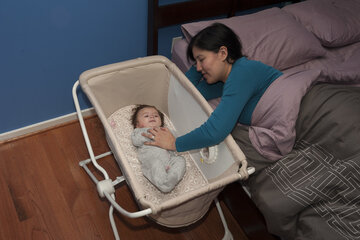
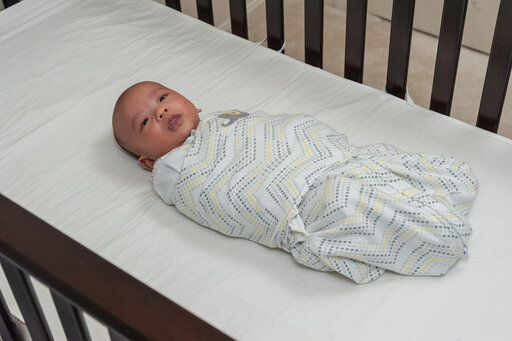
Leave a Comment